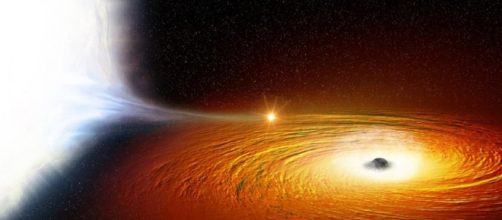A star was discovered orbiting very fast and close to a Black Hole (BH). This is the first time that astronomers have found such a star and its host black hole at a very tight orbit. The binary system-X9 was found using Chandra X-ray Observatory and other telescopes. The system is located in the globular cluster 47 Tucanae about 14,800 light years away from earth. It`s believed that the star might be orbiting the black hole at about 2.5 times the distance between the earth and the moon.
47 Tucanae
This is a cluster of stars in the southern constellation Tucanae located at approximately 16,700 light years away from the earth.
It`s the second brightest globular cluster in the sky; the first being Omega Centaury. With a dense core, it is the most massive globular cluster in the Milky Way with millions of stars. Tucanae contains varied stars in its core, including blue stars, dwarf stars and neutron stars. This cluster contains 25 millisecond stars, making it the second largest pulsar population inside a globular cluster.
BH hole collision
Scientists think that the star´s close position to the BH may have originated when this huge astronomical body came across a red giant star; when the gas from this star was ejected, the remaining core gave shape to a White dwarf star. Another explanation is that white dwarf formed a binary system with a neutron star rather than a black hole. The gravitational waves produced by this binary are too week to de detected by the Laser Interferometer Gravitational-Wave Observatory (LIGO).
X9 gravitational waves could be detected by future telescopes placed in orbit around earth.
BH binaries in the future
While this binary system had been observed for some years, it wasn´t until 2015 that astronomers using the Australian Telescope Compact array (ATCA) discovered that the binary is indeed a black hole and white dwarf; the former pulling matter from the latter. Astronomers plan to study this binary system in more detail in the years ahead, They´re also going to continue studying globular clusters, expecting to find more black hole binaries.

